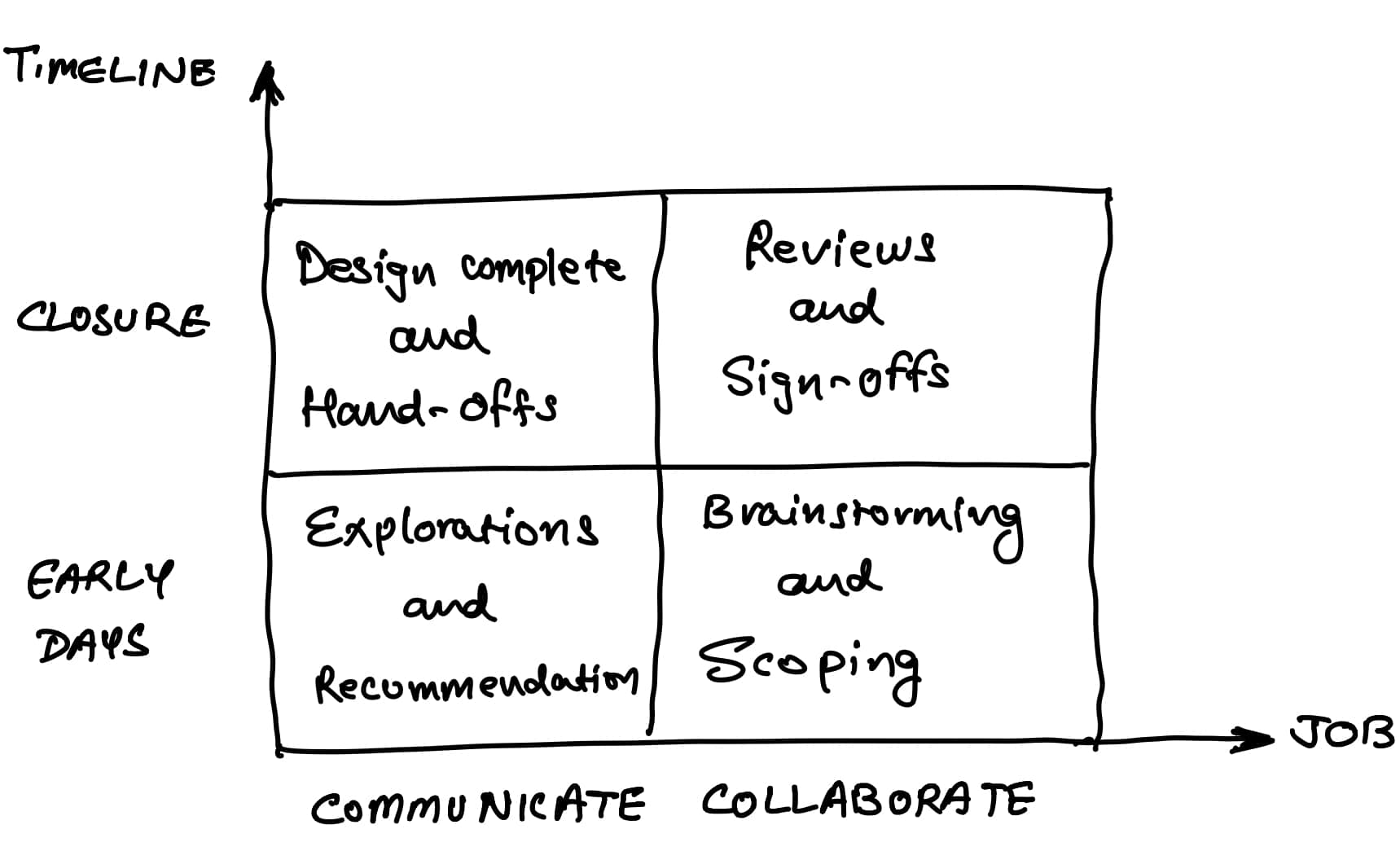Who's a Lead Designer?
Design roles and titles are usually a source of confusion in the industry. We’ve seen both ends of the spectrum – way too specific roles, and the ‘Everyone is a designer’; and then a few variations in between.
As one grows in their design career, the responsibilities evolve. For an individual contributor (an IC), the Lead Designer role is where the bucket maxes out in terms of upholding a serious responsibility of planning and executing at a very high level. Once you go beyond the Lead Designer, we encounter the fuzzy forks on the road: a Principal Designer, a UX Architect, a Staff Designer and so on.
What makes a good Lead Designer is not an easy question to answer since it depends a lot on the org you’re in, the ladder you are calibrated against, the team & product size, the org structure you have and so on. And that’s fine. There’s still a lot of common ground we can derive by observing numerous Lead Designers across the industry and their ladder calibrations.
So if you’re preparing for a step up in your career to a Lead, or are looking to get hired for a Lead Designer role, I’ve created this competency framework that can give you a good idea for what the expectations from the role would be.
Competencies
- Ownership: They demonstrate a very high level of ownership in their work. They not only identify issues early and often, but also ensure an action plan is in place. They oversee the progress with a lot more agency without requiring external support, nudges or motivation.
- Accountability: They hold themselves accountable for the success of (theirs and their team’s) output, as well as the overall outcome of their work. They contribute in planning and then in ensuring the designed plan remains on track in terms of deliverables and commitment. They understand the importance of showing up, and of managing their own visibility across the org.
- Collaboration: They ensure that their peers and stakeholders feel part of the process. They ensure they involve people in the process in a way that people’s inputs are heard. They actively seek out necessary buy-ins in order to ensure a smooth and cohesive continuation of the work.
- Communication: They own their own communication and ensure the right people are always in the loop. They provide proactive visibility into their work to stakeholders. They communicate the changes in plans promptly and professionally.
- Guardianship: They act on the operating principle of ‘Define & Defend’ – first define a principled ethos of what good design means for their org, communicate it well across the board, and then actively defend it. They actively communicate this ethos so that it’s thoroughly ingrained in the org in a way that maximises alignment of stakeholders. They put in this work upfront so that they can avoid the back-and-forth later. They also help junior designers in upholding good design ethos in their work.
- Citizenship: They enrich the org with their experience, perspective, enthusiasm and expertise. They set an exceptional bar and become an example for others to follow. They regularly share insights into their way of working and the work itself, in a way that exposes the rest of the team to excellence.
The Lead Designer is the role in which you see the balance shifting from Receiving & operating on instructions, to Creating & transmitting high-quality instructions.
I’ve observed successful Lead Designers who are great at their job, practice most of the above very well. There’s an easy way to visually remember the core of this framework if you want, built around the fundamental traits of any senior job: Collaborate and Communicate.
The skill-matrix

A Lead Designer is expected to be good at all 4 quadrants.